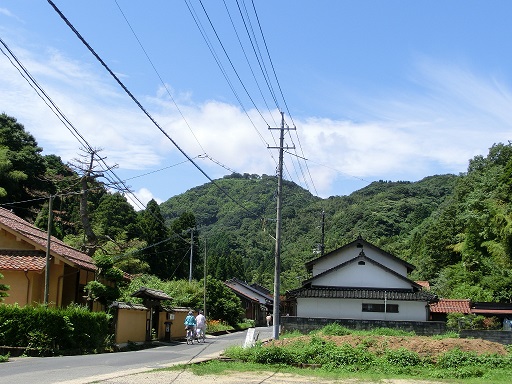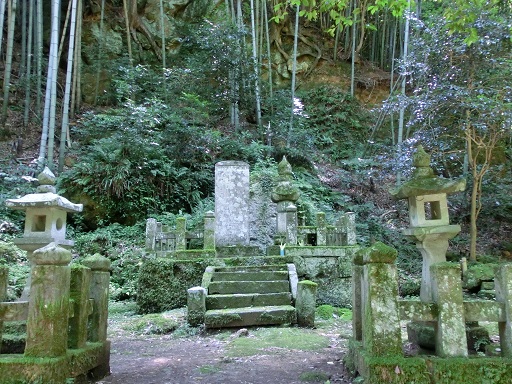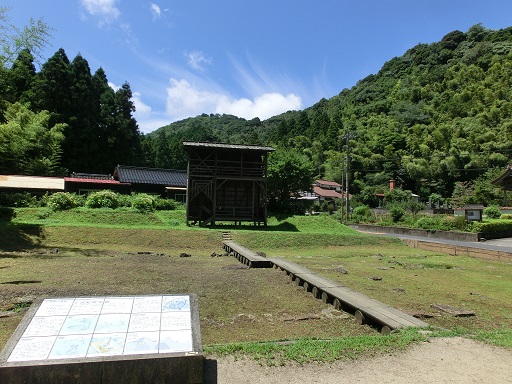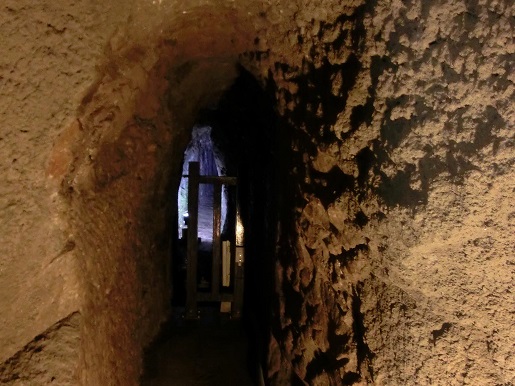|
Ginzan Area in Iwami Silver Mine

Iwami Silver Mine produced approximately one third of total silver amount in Japan in the late sixteenth century and the beginning of the seventeenth century. As Silver production from Iwami Silver Mine brought wealth to "Edo Bakufu", the central government of Japan ran by TOKUGAWA Clan in the Edo Age (1603-1868), "Edo Bakufu" directly governed Iwami Silver Mine and placed the Omori Magistrate's Office.Please refer the top page of "Iwami Ginzan" for the information of other areas: http://handejapan19.html.xdomain.jp/TravelDestinations/Chugoku/IwamiSilver_E.html The mining galleries were located to the south of Rakanji Temple. This area is named "Ginzan" Area, which means "Silver Mines" in Japanese. In Iwami Silver Mine, one thousand of abandoned mining galleries remain. Some of them are open for public. You are also able to visit the sites of silver mine smelters. Ginzan AreaTo the south from Rakanji Temple, the rural scenery is spread. 
If you walk eight hundred meters to the south from Rakanji Temple, the grave of OKUBO Nagayasu (1545-1613) , who was the first magistrate of Iwami Silver Mine, is located in mountains.
Please refer the page of "Omori Magistrate's Office" for the detail information of OKUBO Nagayasu: http://handejapan19.html.xdomain.jp/TravelDestinations/Chugoku/OmoriMagistrate_E.html After OKUBO Nagayasu was died, he was condemned that he made illegal savings to take advantages of his positions. Then, his grave was destroyed and his body was exposed to the public. Near the grave of OKUBO Nagayasu, the sites of the "Shimogawara-Fukiya", which is a silver smelter, is located along the street from Omori Magistrate's Office to the main mining galleries. 
The sites of the "Shimogawara-Fukiya" smelter was found in 1991 by the excavational investigations. The "Shimogawara-Fukiya" smelter was mainly used at the beginning of the seventeenth century. The smelting technology used at the "Shimogawara-Fukiya" smelter was the cupellation method and it was introduced to Iwami Silver Mine from China. If you walk another five hundred meters from the site of the "Shimogawara-Fukiya" smelter to the south, you will be at the entrance to "Shimizudani" Smelter. 
The "Shimizudani" Smelter is located in a mountain area. "Shimizudani" SmelterIwami Silver Mine was run by "Edo Bakufu", the central government of Japan during the Edo Age (1603-1868). After the Edo Age ended in 1868, Iwami Silver Mine declined and many mining galleries were abandoned.In 1894, the "Shimizudani" Smelter was newly developed by building the modern smelter with the investment corresponding to approximately a hundred million dollars in present currency value. |










